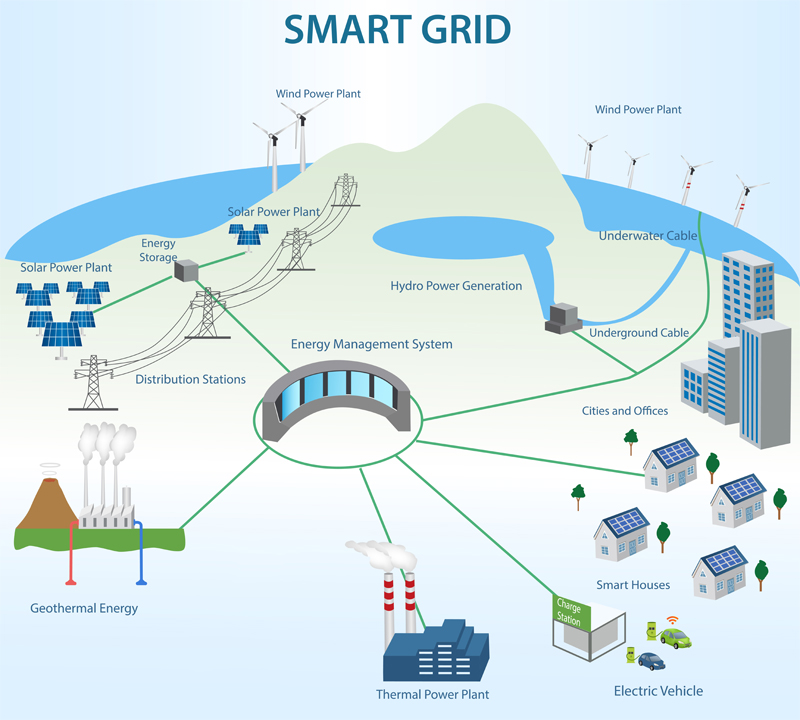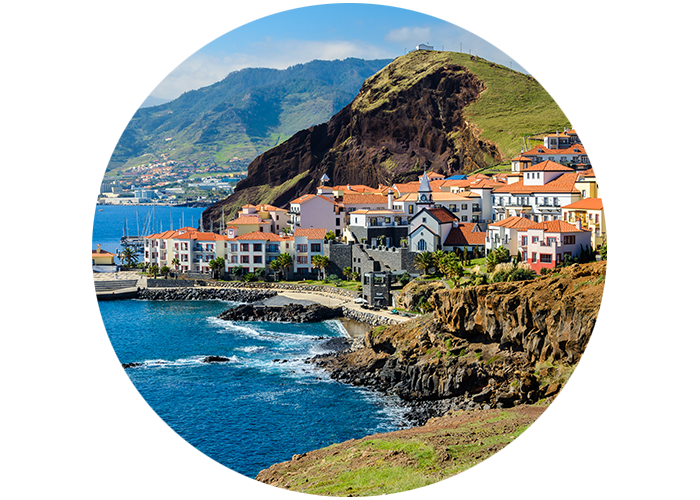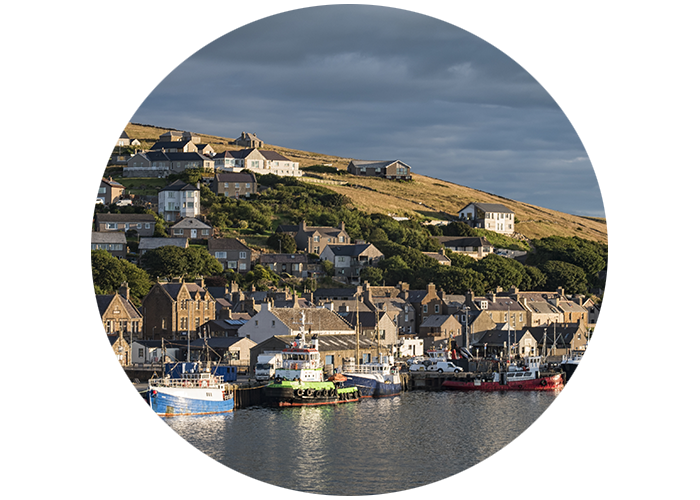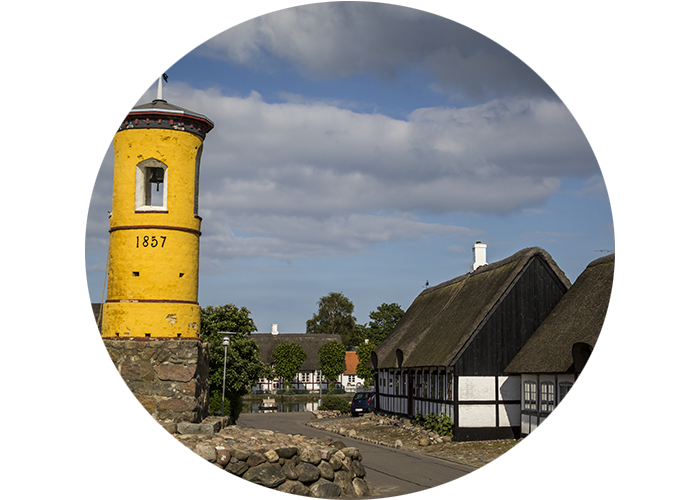About the project
What is a smart grid?
A Smart Grid is an electricity network which automatically monitors the flows of energy and is able to adjust to changes in both supply and demand accordingly.Smart grids are energy networks that can automatically monitor energy flows and adjust to changes in energy supply and demand accordingly. When coupled with smart metering systems, smart grids reach consumers and suppliers by providing information on real-time consumption. With smart meters, consumers can adapt – in time and volume – their energy usage to different energy prices throughout the day, saving money on their energy bills by consuming more energy in lower price periods.
Through smart grids, peak demand can be reduced and the energy grid can be stabilized. Smart grids can also help enhance energy efficiency. Overall, they will have a fundamental role in decarbonizing the economy.

The Project SMILE
The Smart Islands Energy Systems (SMILE) project will develop nine smart grid solutions in three large-scale pilot projects in different regions of Europe with similar topographic characteristics but different policies.Three large-scale pilot projects
According to several documents and papers, the evolution of the energy system into a smart system will not occur in a one-time event, but rather require an incremental learning process such as it is required by an extensive cultural change. This step-by-step learning approach will have to rely on the testing and demonstration of technologies and business models in order to build confidence among the relevant stakeholders for the rollout of smart grid solutions in the coming years.
In order to facilitate the transition, the Smart Islands Energy Systems (SMILE) project will implement three large-scale pilot projects in different regions of Europe with similar topographic characteristics but different policies, regulations and energy markets. The objective is to test solutions while establishing mutual learning processes and providing best practice guidance for replication in other regions. The three pilots will test different combinations of technological solutions according to local specificities and conditions and the existing infrastructure. It will also involve all value chain actors needed to efficiently implement projects system-wide. Moreover, cross-cutting activities among the pilots will be devoted to solve common technical, organizational, legal, regulatory and market-related issues as well as to evaluate the solutions from the economic and business points of view.
Why islands?
The choice of having solutions tested on island locations provides a fundamental advantage to the project. Island communities can be more easily engaged in the real-life testing of solutions aimed at solving important challenges impacting life on the island. Therefore, they are the ideal candidates for demonstration activities requiring societal engagement and active residents’ commitment.
Besides, each case study represents an important energy challenge that is common to several locations in Europe, on islands as well on the mainland. Though all of the case studies are in island locations, not all of them do represent total energy islands. In fact, both the Orkney Islands and Samsø are electrically connected to the mainland network and can therefore be representative of smart grids located on the mainland as well. Madeira is the only case of a total energy island, not connected to the mainland network.
Objectives & Results
The project’s main objective is to create nine market ready Smart Grid technologies that can be rolled out anywhere in the world.This project has received funding from the European Union’s Horizon 2020 research and innovation programme under grant agreement No 731249.
This website reflects only the author's view. The European Commission and the Innovation and Networks Executive Agency (INEA) are not responsible for any use that may be made of the information it contains.




